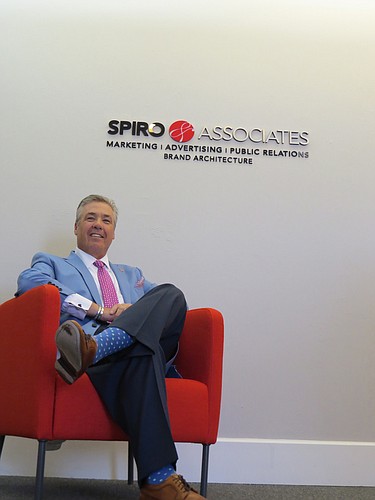- April 4, 2025
-
-
Loading

Chris Spiro calls it “brand architecture,” the grand design of the public-facing image of a company on which, like a good building design, the foundation is laid and the glittering facade is affixed to the structural integrity of the organization. And when those architectural elements are damaged, the repair must be expedient and complete to prevent further destruction.
In an age of what he describes as a form of cyberterrorism — when a business’ reputation can be torpedoed overnight by either a self-inflicted misstep or a coordinated online assault — Spiro, whose Fort Myers-based Spiro & Associates marketing and public relations firm has worked with companies to minimize such damage, points to his “gold standard” of crisis management: own it, empathize, demonstrate action and control the narrative.
“What you're seeing now are reputations crucified in a social media world,” says Spiro. “It's easy to create a meme and launch it. You have a wild frontier out there, and it's quick.”
That means the response should also be quick. But thoughtful. A reactive reply, or not one at all, is likely to result in further damage. So whether it’s a tweet or review gone viral, legal action against the business or disastrous product launch, Spiro outlines a series of steps to manage a corporate crisis:
• Own it. “You have to validate the concerns, whether it’s an accusation lodged against your company or an individual within your company," says Spiro. "You have to recognize it, and you have to say you will look into it at a minimum. You have to display empathy and regret, even as the company may go about verifying the facts of the issue. You're not saying that anything is true, only that you are looking into it.”
• Show action. “You have to assure the public you are implementing policies and procedures," he says, "and make sure it doesn’t happen again.”
• Have a plan. “I don't care if you are a one-person shop, a 10-person shop or a 10,000-person shop, have a plan. Who speaks? How are you pushing that information upstream? And then you need to make your staff aware of it. It's OK to issue a statement and have your staff handle it by phone, so if you get a subcontractor or someone who calls for a response, they have a script that says the company is currently not responding, and they would be happy to provide the contact information for someone who can speak. Make sure you are cooperating so there is no appearance of guilt.”
• Silence is not golden. “It's an admission of guilt, even if you are not guilty. Silence is the worst thing you can do. But if you are unclear as to what is happening or you are putting together your defense — or your offense because sometimes you have to respond on offense rather than defense — you don't have to reply immediately. It's OK to simply issue a statement that conveys that you hear the concerns, you understand the concerns, and you are formulating your response.”
“If you own it, if you’re genuine about it and you actually acknowledge it, put a plan in place and move forward accordingly, people tend to forgive. But you have to demonstrate that action.” Chris Spiro, Spiro & Associates
The best defense of protecting a brand is often a good offense, Spiro adds. When crafting marketing campaigns, Spiro recommends being cognizant of the ever-increasing social sensitivities to stereotypes when projecting a company’s image. He recalls an ad campaign for a Mexican restaurant that featured caucasian males wearing exaggerated fake mustaches and speaking in a faux Mexican accent. He showed that campaign to a new Mexican restaurant client, explaining why such a campaign won’t work today.
“It was hilarious as a TV commercial at that time,” says Spiro. “We had to explain to our new client that those same things that were humorous years ago will not cut the mustard today. Potential headlines have to be thought of. Visuals have to be thought of. You have to be very cautious when you present your message, and how the public may perceive that message.”
How to motivate people to meet sales goals
How to run an effective brainstorming session
How to get a business loan when you need one
Have a crisis to manage? Here's how
How to deliver potentially scary news to employees
How to go out on your own and leave a corporate gig and salary behind
How to launch a B-Corp that generates results
How to hire and train people fast
How to manage multiple generations in the workplace
How to provide exceptional service